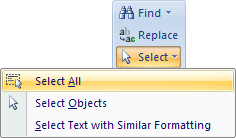

Proof it on screen first and then print it out on cheap paper. Your card is ready with its combination of pictures, colors, and text.
#Print preview edit mode word starter install#
While you can install creative fonts in Microsoft Word, not all of them will print well. Also, choose a typeface that reflects the mood of the event and format it with the color that best matches the background or the graphics. Tip: Stick to one or two typefaces to make it less distracting. In this tutorial, we have given the text a “Glow” to boost the celebratory feel of the card. The aesthetic combination will also depend on the picture that works as the background for the text. Play around with fills, gradients, and transparency to decorate your text. Select Format Shape to display a sidebar with all the Shape and Text Options. Then select the Text Box and right click to open the context menu. For instance, you can begin with a nice font, set the right font size, and give it the right font color. Text options inside a Text Box in Microsoft Word come with advanced formatting. In the Layout settings, fix the position of the line shape by setting the Horizontal and Vertical alignments. To keep it exactly in the middle, select the Layout Options icon that is suspended above the selected line.

Press the Shift key and draw a vertical line across the middle of the page.Īny new content on the page can nudge this separator.

For our tutorial, we will use the line shape and place it in the center of the page. Divide Your Page for the Foldįor greeting cards that fold down the middle, you can divide the page in half. Use the settings to enable the Snap-to feature, display alignment guides, and change the distance between gridlines.Īs this Microsoft Word support article says, the Snap To feature only works in Print view. For a selected shape, the tab will read Shape Format. Go to the Format tab on the right of the ribbon. Likely the circle will no longer align with that word once you switch back to Print mode.Select your graphic in the document. But if you circle a word in Read mode, it's highly For example, some editors might prefer to use the pen to circle words that they want to go back to later. It would be great to have more functionality than this, but I understand the inherent limitations. or choose a different colour from the sub-menu pop-up. You can do the same thing with a mouse: select some text, right-click, and then either click "Highlight" to apply the existing highlighter colour. I can also choose a colour from a secondary pop-up sub-menu, but just tapping "Highlight" will apply This opens a pop-up menu that allows me to choose "Highlight". (I don't mind doing it that way, because it suits the way I work: it allows me to read a passage in its entirety, before going back and making the corrections.) To do this, I use the pen to select some text in Read mode, click the context-sensitiveīutton (the one that's equivalent to the right button on a mouse) and tap the selected text. I can mark a bunch of things, and then switch to Print mode and attend

In Read mode, I can use the pen to highlight words or passages that I want to revisit.
#Print preview edit mode word starter pro#
I'm using a Surface Pro 3 and am able to use the digital pen for marking corrections while proofing. But Read mode is great for proofing a document, because I can set the view to maximize readability and convenience and it would be great to have some limited editing functionality. From Microsoft's point of view, I can understand that editing in Read mode could cause unpredictable behaviour, simply because Read mode has limited ability to show the user the results of anyĮditing or formatting. I agree, losing the ability to edit in Read mode is massive.


 0 kommentar(er)
0 kommentar(er)
